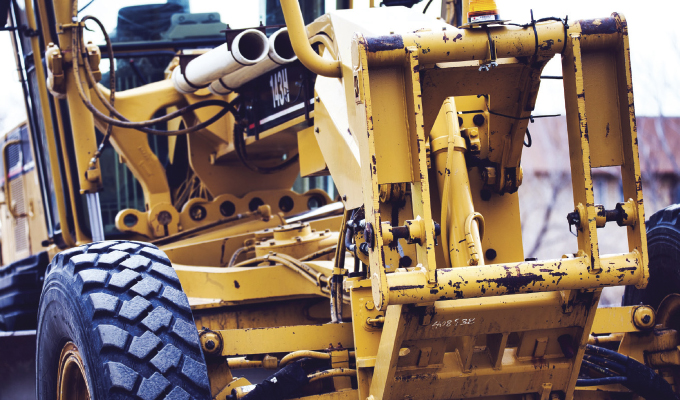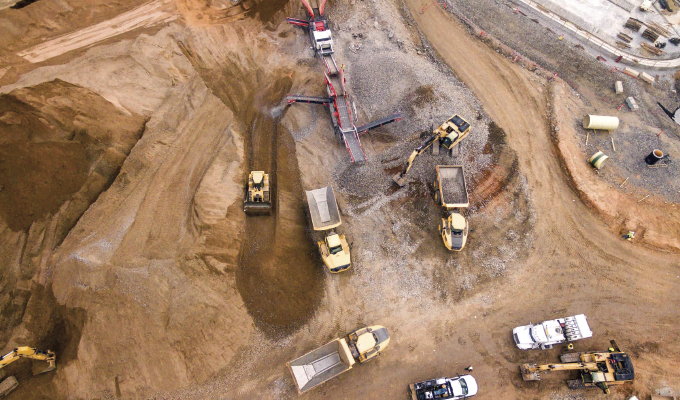It’s becoming increasingly popular for decision-makers to use the Internet of Things (IoT) during construction projects. The IoT in construction usually involves using smart sensors and similar data trackers to provide real-time information, allowing for improved visibility over operations. Some leaders even invest in IoT construction equipment to get better insights into performance, overall usage time, and more.
Below are some specific ways those in the construction industry can get the most out of IoT technology.
TRACK ASSETS & PEOPLE
Many applications of the IoT in construction center on helping site managers know precisely where assets or employees are at any given time. The value of construction equipment makes it a heavily targeted category for thieves and vandals. However, IoT trackers allow users to set geofences around their assets and notifies users whenever those assets move outside a predefined area.
IoT construction equipment can also sync with workers’ identification badges. The technology tells leaders which employees use assets ranging from hammers to backhoes. That information is particularly useful if linked to equipment that requires specific training. Site managers could get themselves in legal and regulatory trouble if someone uses items without the necessary certifications or qualifications.
Depending on how the IoT technology is set up, it could tell site leaders which employees use certain pieces of equipment and when. That’s an excellent way to manage risk. Another option is for workers to don IoT wearables. That approach helps managers see when they enter or leave a site, making it easier to plan tasks and whole workdays without dealing with interruptions or relying on guesswork.
IoT construction equipment often has associated operator statistics, too. Perhaps a person uses machinery recklessly or has wasteful habits such as idling too much. IoT data supports productive supervisor coaching in such cases, helping the discussions stay relevant.
IMPROVED AWARENESS
Using the IoT in construction projects can also entail relying on smart sensors to help people have a more accurate understanding of environmental risks. For example, some sensors embedded in safety vests light up and vibrate when people are in dangerous areas. That extra awareness extends beyond the wearer to individuals who may be operating heavy or ear-damaging equipment nearby.
Safety signage is a common sight in construction areas. IoT devices will never replace it. However, they can help people become aware of the threats they may otherwise miss altogether or not notice until it’s too late.
Applying the IoT in construction can also mean people become more aware of when they’ve overtaxed themselves and need to take breaks. Some devices track statistics like heart and respiration rates or perspiration levels. The data is crunched to determine whether that individual is working too hard and is at risk of collapsing if they don’t take a break soon.
In short, IoT construction equipment provides better awareness in a couple of ways. First, it alerts people to threats in real time so they can avoid them without incident. However, the associated data can also tell supervisors of trends that could cause future accidents if not mitigated. Thus, it supports improved decision-making to keep a site safer from the start through the end of a construction project.

AVOID SUPPLY DELAYS
The construction industry has been like most others in that it has experienced supply chain delays. The IoT can’t prevent all those slowdowns, but it can increase efficiency regarding what happens to incoming parcels during their journeys. One ongoing challenge is that goods typically change hands multiple times before reaching their final destinations.
IoT sensors can show pertinent details once customers or supply chain clients learn that shipments have slowed down en route to construction sites. For example, where did the backup occur? Which shipping partner was handling it at the time?
Thanks to those details, the affected parties can act sooner to reduce the length of any delays. They can also use the data to track trends indicating potential problems with supply chain partners. Does a particular company repeatedly handle fragile goods roughly? Do they promise to deliver the goods within certain timeframes but then fall short?
Since IoT devices track data continuously, they help people verify how specific supply chain partners perform over time. The associated information makes it easier to justify putting providers on probation or reminding them how they don’t match up to previously agreed minimum standards.
SUPPORT PROJECTS
People use many metrics to determine whether a construction project succeeds. Did it finish on time, under budget, and with minimal accidents? If so, it was likely successful.
Relying on the IoT in construction can’t address all inefficiencies and unsafe working practices that could cause a project to get behind schedule or have too many worker incidents. However, the associated data can show project and site managers where room for improvement exists.
IoT construction equipment data helps leaders remain actionable rather than notice issues before it’s too late to rectify them. This allows projects to proceed as planned with fewer problems.
ABOUT THE AUTHOR
Emily Newton is an industrial writer with over five years’ experience writing industrial topics for the construction, manufacturing, and supply chain industries.




